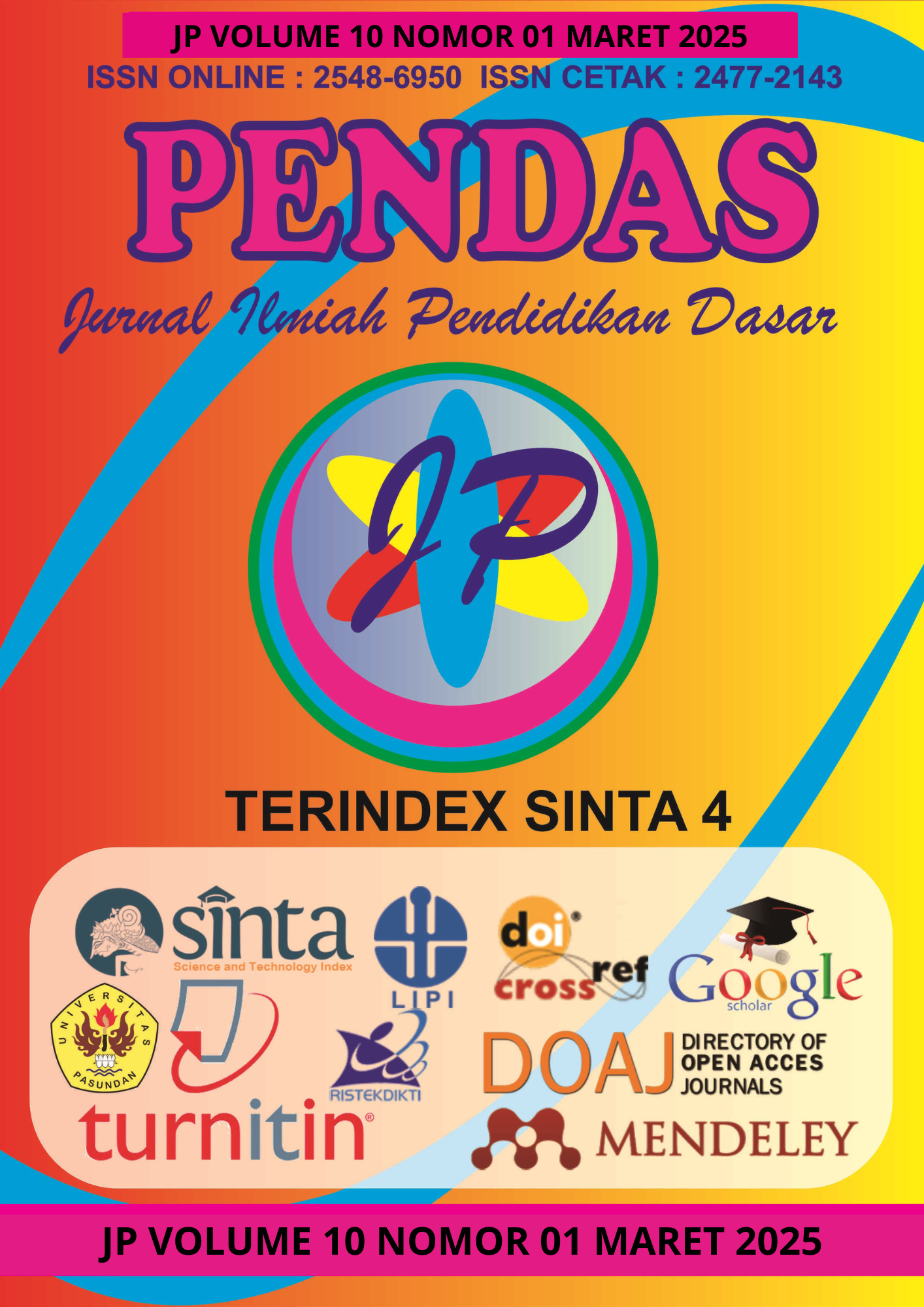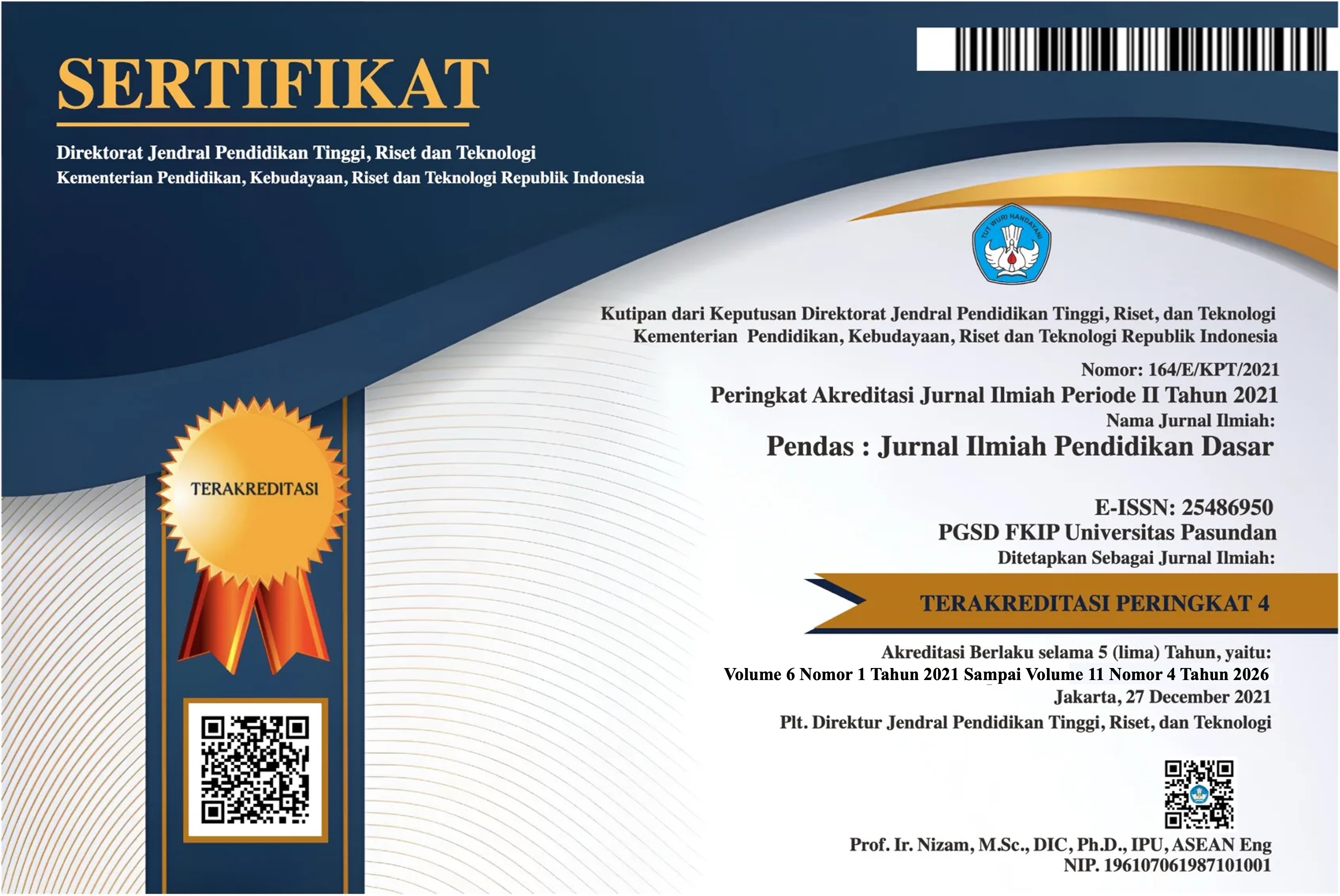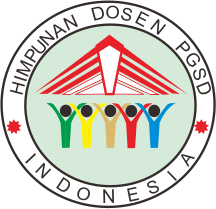PENGEMBANGAN MODEL PEMBELAJARAN IPAS BERBASIS STEM-SRSD UNTUK MENINGKATKAN KETERAMPILAN NUMERASI DAN BERPIKIR KRITIS SISWA SEKOLAH DASAR
DOI:
https://doi.org/10.23969/jp.v10i01.22606Keywords:
critical thinking, numeracy skills, science learning model, STEM-SRSDAbstract
This study aims to develop a STEM-SRSD-based Natural and Social Science learning model to improve the numeracy and critical thinking skills of elementary school students that is valid, practical, and effective. The development of this model is motivated by the greater focus on literacy skills, while numeracy skills are often neglected, even though these skills are crucial in the modern era. Based on preliminary studies, the use of STEM approaches and SRSD strategies is still limited among teachers. Therefore, this research aims to develop a learning model that can train students' numeracy skills. This study uses a mixed-method approach with an embedded experimental model design. The development model selected is the 4D design (define, design, develop, disseminate). The research subjects consisted of 19 students in the experimental class and 18 students in the control class at SD Negeri 01 Panca Tunggal Jaya. The results showed that expert validation obtained an average score of 7.10 with a validity percentage of 78.85%, categorized as valid. The practicality test showed an average score of 95.79%, categorized as very practical. The effectiveness test showed an N-Gain of 0.74 for the experimental class (effective), while the control class had 0.04 (less effective). Therefore, the STEM-SRSD learning model is valid, practical, and effective in improving the numeracy and critical thinking skills of elementary school students, while also introducing a new learning model.
Downloads
References
Ariansyah. 2017. Profil Pemahaman Konsep dan Pemecahan Masalah Bilangan Real Ditinjau dari Gaya Belajar Siswa Kelas X Al-Bayan Makasar. Tesis tidak Dipublikasikan. Program Pascasarjana Universitas Negeri Makasar. Makasar
Gazali, R. Y. (2016). Pengembangan bahan ajar matematika untuk siswa SMP berdasarkan teori belajar ausubel. PYTHAGORAS: Jurnal Pendidikan Matematika, 11(2), 182. https://core.ac.uk/download/pdf/193343171.pdf (diakses tanggal 2 Februari 2025).
Giyanto. 2020. Prosiding Seminar Nasional NCIET Vol.1 (2020) A166-A174 National Conference of Industry, Engineering and Technology 2020, Semarang, Indonesia. 1, 166–174.
Harris, Karen R., Graham, S., & Mason, L. H. 2006. Improving the Writing, Knowledge, and Motivation of Struggling Young Writers: Effects of Self- Regulated Strategy Development with and Without Peer Support. American Educational Research Journal, 43(2). https://doi.org/10.3102/ 00028312043002295
Harris, K. R., & Graham, S. 2018. Self-Regulated Strategy Development: Theoretical Bases, Critical Instructional Elements, and Future Research. In Studies in Writing (Vol. 34). https://doi.org/10.1163/9789004270480_007
Jacobson, L., & Reid, R. 2007. Self-Regulated Strategy Development for Written Expression: Is it Effective for Adolescents? Pearson Assessements, 2(3)
Kemendikbud. 2017. Materi Pendukung Literasi Numerasi. Jakarta: Kementerian Pendidikan dan Kebudayaan
Muhyidin, A., Rosidin, O., & Salpariansi, E. (2018). Metode Pembelajaran Membaca Dan Menulis Permulaan Di Kelas Awal. JPSD (Jurnal Pendidikan Sekolah Dasar), 4(1), 30–42. https://doi.org/http://dx.doi.org/10.308 70/jpsd.v4i1.2464
Reynders, G. et al. (2020). Rubrics to Assess Critical Thinking and Information Processing in Undergraduate STEM Courses. Reynders et al. International Journal of STEM Education. https://doi.org/10.1186/s40594-020-00208-5
Santangelo, T., Harris, K. R., & Graham, S. (2008). Using self-regulated strategy development to support students who have “trubol giting thangs into werds.” Remedial and Special Education, 29(2), 78–89. https://doi.org/10.1177/ 0741932507311636
Suhelayanti, S., Aziz, M. R., Sari, D. C., Safitri, M., Saputra, S., Purba, S., Revida, E., Purba, R. A., Muharlisiani, L. T., & Simarmata, J. (2020). Manajemen Pendidikan. Yayasan Kita Menulis.
Thiagarajan, Sivasailam; And Others. 1974. Instructional Development for Training Teachers of Exceptional Children: A Source Book. Indiana: ERIC
Torlakson. T. (2014). Innovate: A Blueprint For Science, Technology, Engineering, and Mathematics in California Public Education. California: State Superintendent of Public Instruction.
Trilling, B. and Fadel,C.(2009). 21 st Century skills: Learning in a Web 2.0 World. Solution Tree Press.pp.2-3.ISBN 978-1-935249-87-0.
Usmaedi. (2017). Menggagas Pembelajaran HOTS Pada Anak Usia Sekolah Dasar. [Online]. Diakses dari jurnal.untirta.ac.id/index.php/jpsd/article/ view/1040
ubaidah, S. (2016). Keterampilan Abad Ke-21: Keterampilan yang Diajarkan Melalui Pembelajaran. Universitas Negeri Malang: Isu-isu Strategis Pembelajaran MIPA Abad 21, 1-17.
Downloads
Published
Issue
Section
License
Copyright (c) 2025 Pendas : Jurnal Ilmiah Pendidikan Dasar

This work is licensed under a Creative Commons Attribution 4.0 International License.



















